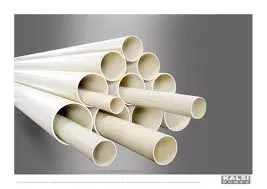Dec . 23, 2024 07:31 Back to list
Installing and Connecting Kitchen Sink Water Supply Lines for Optimal Performance
Plumbing Kitchen Sink Water Lines A Comprehensive Guide
When it comes to home plumbing, one of the most essential yet often overlooked components is the water lines that supply your kitchen sink. Understanding these water lines is crucial not just for troubleshooting issues, but also for ensuring that your kitchen remains a functional and efficient space. In this article, we will explore the types of water lines, common issues, installation tips, and maintenance practices to keep your kitchen sink running smoothly.
Understanding Kitchen Sink Water Lines
Kitchen sink water lines can be broadly categorized into two types hot water lines and cold water lines. These lines are typically made of materials such as copper, PVC, or PEX (cross-linked polyethylene). Understanding the differences between these materials is essential for making informed decisions regarding repairs or installations.
1. Copper Known for its durability and resistance to corrosion, copper water lines can last for decades when installed properly. However, they can be prone to bursting in extreme cold and are more expensive than other materials.
2. PVC This plastic material is lightweight and resistant to various chemicals, making it an affordable option for cold water lines. However, it's important to note that PVC is not suitable for hot water applications.
3. PEX Increasingly popular among homeowners and plumbers alike, PEX is flexible and easy to install, allowing for fewer fittings and joints. It is suitable for both hot and cold water lines, providing a versatile option for modern plumbing systems.
Common Issues with Water Lines
While kitchen sink water lines are designed to be durable, they can still experience problems. Here are some common issues to watch for
- Leaks One of the most frequent problems is leaks, which can occur due to loose fittings, corrosion, or wear and tear. A leaking line can lead to extensive water damage and mold growth if not addressed promptly.
- Clogs Clogs can develop in the water lines, leading to decreased water flow or pressure. These can be caused by debris buildup or blockages in the pipes.
- Water Pressure Insufficient water pressure can indicate a problem in the water lines, including leaks or clogs. Proper pressure is essential for the efficient functioning of your kitchen sink.
plumbing kitchen sink water lines product

Installation Tips
If you're considering replacing or installing new water lines for your kitchen sink, here are some essential tips to keep in mind
1. Plan Your Layout Before you start, plan the layout of your water lines carefully. Consider the location of your sink and any nearby appliances to ensure that your lines are accessible and efficient.
2. Use the Right Materials Choose the right materials based on your plumbing needs. For instance, if you're installing a line for a hot water supply, make sure to use PEX or copper rather than PVC.
3. Check Local Codes Building codes can vary by location, so make sure to check local regulations before starting your installation project.
4. Seek Professional Help If you're unsure about the installation process or if your plumbing systems are complex, it might be best to consult a licensed plumber. Proper installation can save you time and money in the long run.
Maintenance Practices
Maintaining your kitchen sink water lines is vital for ensuring a long-lasting plumbing system. Here are some best practices
- Regular Inspections Periodically inspect your water lines for any signs of wear or damage. Addressing small issues early can prevent more significant problems down the line.
- Keep it Clean Regularly clean the area around your sink and the water lines to prevent debris and buildup that can lead to clogs.
- Monitor Water Pressure Keep an eye on your water pressure and address any sudden changes. These could indicate issues within your water lines that need immediate attention.
In conclusion, understanding kitchen sink water lines is essential for every homeowner. By familiarizing yourself with the types of materials, potential issues, installation tips, and maintenance practices, you'll be better equipped to manage this crucial aspect of home plumbing. Whether you choose to tackle plumbing tasks yourself or hire a professional, being knowledgeable about your water lines will lead to a more functional and efficient kitchen.
-
High-Quality PVC Borehole Pipes Durable & Versatile Pipe Solutions
NewsJul.08,2025
-
High-Quality PVC Perforated Pipes for Efficient Drainage Leading Manufacturers & Factories
NewsJul.08,2025
-
High-Quality PVC Borehole Pipes Durable Pipe Solutions by Leading Manufacturer
NewsJul.08,2025
-
High-Quality PVC Borehole Pipes Reliable PVC Pipe Manufacturer Solutions
NewsJul.07,2025
-
High-Quality UPVC Drain Pipes Durable HDPE & Drain Pipe Solutions
NewsJul.07,2025
-
High-Quality Conduit Pipes & HDPE Conduit Fittings Manufacturer Reliable Factory Supply
NewsJul.06,2025

